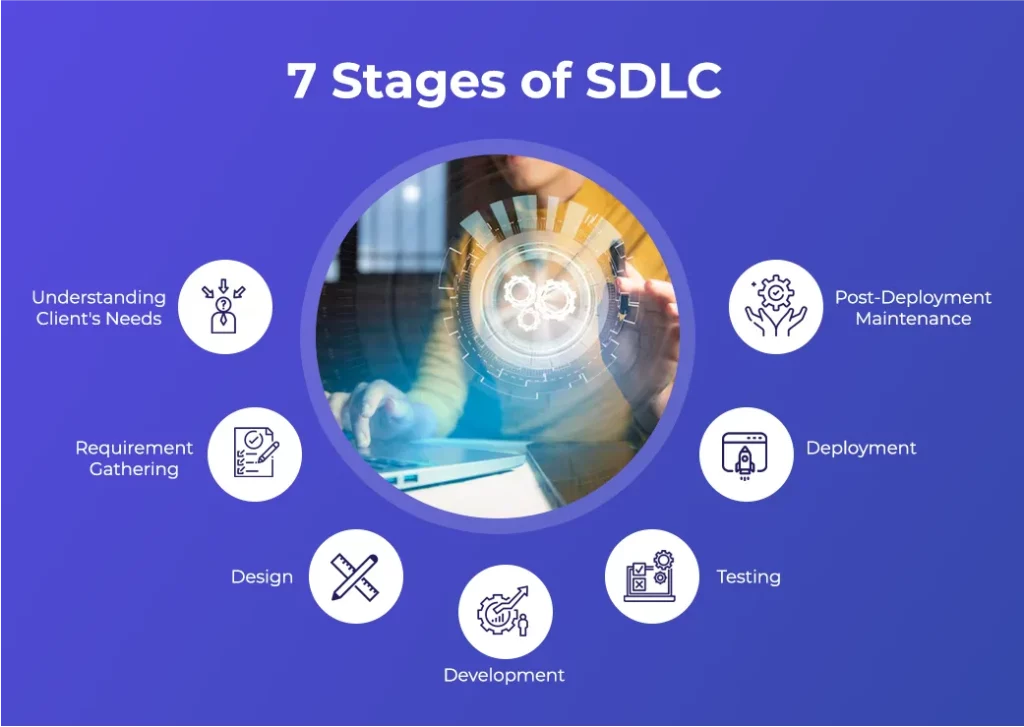What is Custom Software Development?
The world is moving at a rapid pace, and so is technology, which is why we are witnessing a constantly evolving landscape for technologies like AI, ML, cloud computing, and SaaS models that are fueling the expansion of the custom software sector. Businesses are not only investing heavily in custom software development, but they are also gaining a competitive edge with the unique and innovative features of software solutions that can adapt to the constantly changing market trends.
This article explores the process, benefits, comparison, and cost of custom development services.
Table of Index
What is Custom Software Development?
The demand for software development services in the global market is growing rapidly. The worldwide software development industry is expected to grow to $146.18 billion by 2030, with a CAGR of 22.5% propelled by digital transformation.
Technology is evolving rapidly, with new advancements introduced regularly.
With the emergence of advanced technologies such as AI, cloud computing, and blockchain, there is a surge in new business and startup activities that leverage these technologies to thrive in the cutting-edge market, where off-the-shelf software solutions often fail to meet their needs.
Businesses need software that is tailored to their complex needs, solutions that align with their brand strategy, pivotal business processes, and management policy. To meet the needs of businesses of all sizes, from large/small-scale, the concept of custom software development arose.
The custom software development process involves partnering with a reputable software development company that follows a strict step-by-step process (also known as SDLC) to conceptualize, design, construct, and deploy software solutions.
Custom Software Development compared to Off-The-Shelf Software Development Services
Additionally, know that custom software solutions are built on the specific needs of your business, you get to decide what features your software will have, how it will look and work; additionally, they change as your business does. Crafting and deploying a tailored software solution can be a costly and lengthy endeavor. On the other hand, off-the-shelf software solutions are pre-built software with a generic design and use case; they are easy to get and quick to set up.
The whole purpose of this software is that they are designed for a wide audience, and you can’t easily tweak it! Some of the popular and useful examples would include Salesforce and Asana.
Here is a comparison table of Custom Software Development Vs. Off-The-Shelf Software Development
Custom Software Development
Off-The-Shelf Software Development
Let's Look into the Custom Software Development Life Cycle
There are 7 key stages in the software development life cycle (SDLC), from gathering information to pre-deployment maintenance. Reputable custom software development companies follow the 7 stages to deliver a state-of-the-art product that effectively meets your business needs, aligns with your budget and timeframe, while ensuring high-quality services.
However, the utilization of the software development life cycle depends on the company’s development model. Some software companies can use different development model, such as RAD, Waterfall, Agile Methodologies, and V-Model.
Here is a detailed description of the 7 stages of SDLC:

1. Understanding Client's Needs
The initial phase of custom software development is crucial for the success of any project. It involves a collaboration between custom software developers and the stakeholders of the business.
The stakeholders are expected to help the developer team with a clear representation of their ideas, objectives, problems, and potential market size etc. It starts with brainstorming and gathering insightful points to sketch out a tentative concept of the software.
2. Requirement Gathering
The feasibility analysis is a process where impractical ideas are scratched out and practical ones are put forward by collecting both functional and non-functional requirements.
A requirements specification document is created, which serves as a roadmap throughout the lifecycle of the custom software development project.
3. Design
Designing is the most challenging part of the custom software development process, as it transforms business needs into actionable results.
Custom software developers figure out the features of the software, how they will work, and create a rough layout for the same using tools such as data flow diagrams and wireframes.
There are two design layers in the stage of designing – high-level design and low-level design.
- High-level design – The high-level design displays how different sections of software are connected and what each of them is supposed to do.
- Low-level design – Briefs on how things work step-by-step, while keeping focus on how each part will handle data and connect with other parts.
The whole point of this stage is to provide a sample mock-up of the final software, which also helps in detecting potential issues and leaves room for improvement.
4. Development
The fourth stage in the software development phase is all about turning designs into complete software applications. The best development team identifies the functionalities required for the minimum viable product. After determining the right programming language, software engineers start coding that fits perfectly with the project requirements.
While this is also the most time-consuming phase, it requires precision, determination, and dedication from software engineers. To complete this phase, the duration is up to 1 to 3 months.
5. Testing
Extensive testing is very important in the custom software development process. Testing of both technical and user experience is necessary. The quality assurance engineer is responsible for evaluating both the operational and non-operational aspects of software.
The functional testing includes checking the capabilities of the software application through manual and automated tools. Conversely, non-functional testing takes a comprehensive approach to assessing performance, security, and user satisfaction.
6. Deployment
The second-to-last stage is the deployment phase, which makes the software application available for the users, transferring it to the live environment. It is important to keep a backup before going live to prevent the potential risk of data loss.
Although such systems as NetSuite, LS Nav, or Springboard Retail are rather versatile, they are not personal enough and do not provide the flexibility that growing brands require. In the case of custom software development services, you have every aspect in your control, including design planning and third-party connections.
7. Post-Deployment Maintenance
The relationship between a custom software development company and its client continues after deployment. Post-deployment maintenance ensures the software remains updated and effective.
The team is responsible for fixing issues, providing support, adding features, and upgrading as needed. To hire software developers who can complete your project successfully, you need to make sure that they follow the above-mentioned SDLC process.
What is the Cost of Software Development Services?
One thing is clear: custom software solutions are more expensive than off-the-shelf alternatives. They are expensive for a reason, apart from following a secure and proper 7-stage development process, other reasons can influence the overall cost of your project.
They are the size, technology stack, integration needs, complexity, and geographical location of the team you outsource/ partner with. However, the price ranges are as follows –
- Small-Scale Projects: $5,000 to $25,000
- Medium-Scale Project: $25,000 to $50,000
- Large-Scale Project: $5,000 to $500,00+
What are the Emerging Technologies in Custom Software Development?
While AI is not a new concept in 2025, improvements in AI and ML are now deeply integrated in custom software development to better align with business goals. Software development teams are staying ahead in industry by leveraging these technologies and integrating them into their services. Here are the top emerging technologies in the software development landscape:
1. Utilization of VR and AR in Custom Software Development
Virtual and augmented reality are rapidly changing gaming, healthcare, education, and various other industries. They are enhancing user experience with an intuitive and engaging user interface, enabling users to interact with software through gestures and voice commands.
2. AI and ML
Incorporating AI and ML technologies into custom software development boosts efficiency, fosters innovation, and improves precision. Mostly because they automate lengthy, time-consuming tasks, such as code generation, debugging, code review, and testing with AI-powered tools.
AI algorithms improve predictive analytics by forecasting trends and identifying potential risks. Lastly, but most importantly, they provide personalized user experience.
3. Quantum Computing
Unlike conventional computers that rely on binary bits, quantum computers utilize qubits. This enables quantum computers to process huge amounts of information, unlocking their full potential by optimizing and cracking cryptographic codes.
4. Blockchain for Security
Looking to enhance your current system with an additional layer of protection? It’s now possible with blockchain for vital security. It is decentralized, which stops scammers and hackers from accessing your data.
Wrap it Up!
When there are countless custom software development companies to choose from, it’s easy to feel daunted and confused. However, you need to keep in check aspects such as experience and expertise, methodology and communication, and their tech stack, which will help you hire software developers who deliver the project efficiently.

